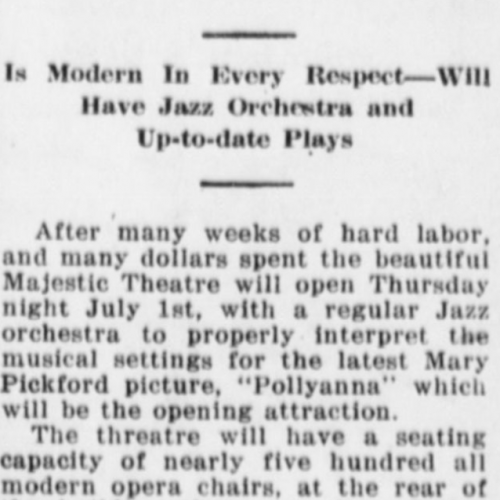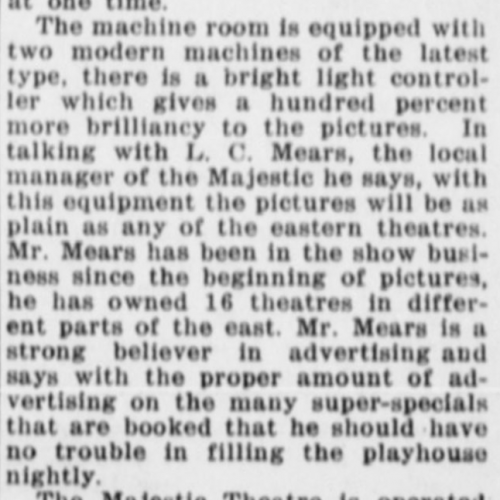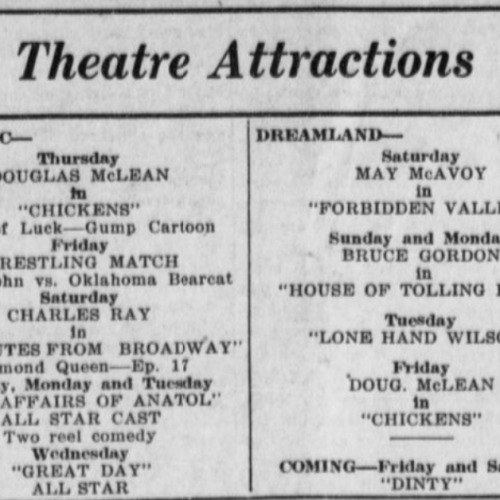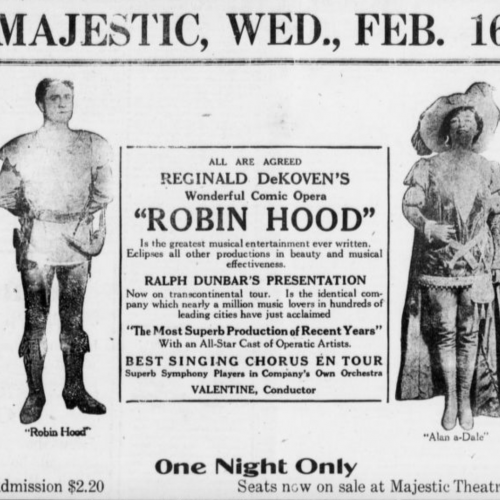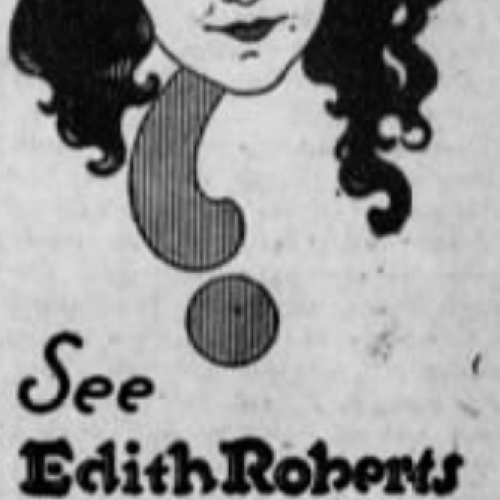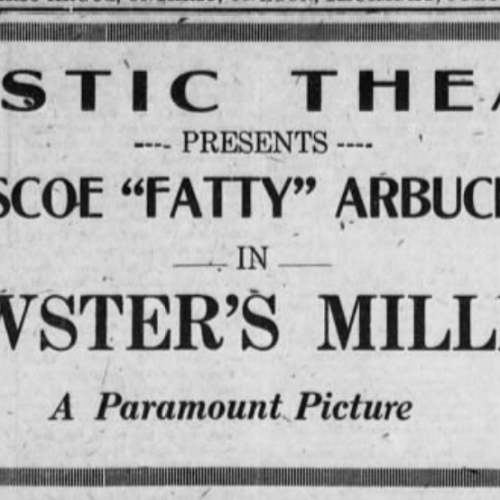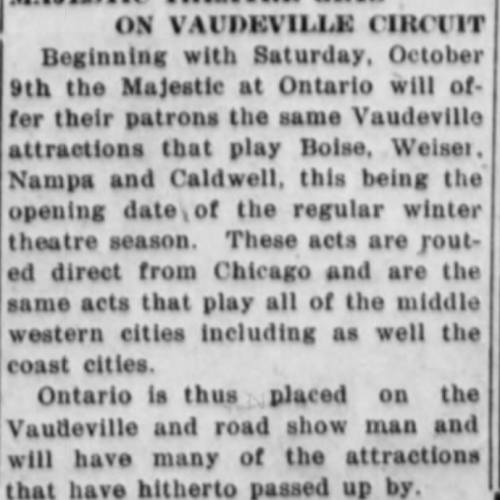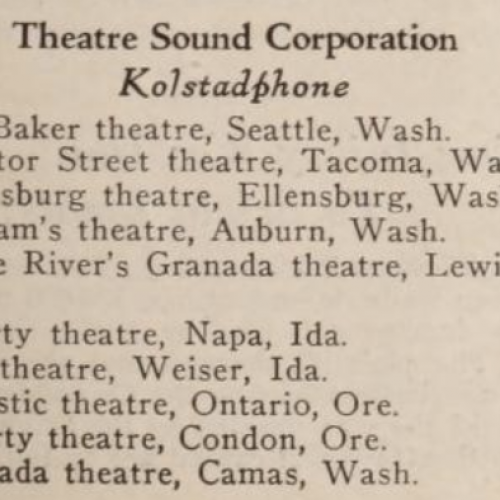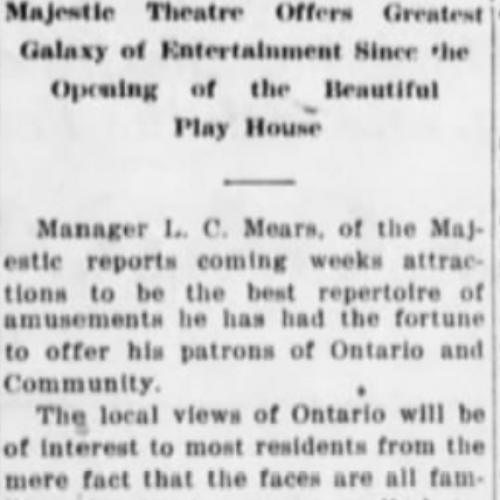The Majestic Theatre opened its doors to the people of Ontario, Oregon on July 1, 1920 (1). This roughly 500-seat theater with three loges (box) seating areas. was the second theater to open in the small eastern Oregon town in the early part of the 20th century, eight years after the Dreamland Theatre. The theatre was established and owned by The Majestic Amusement Company which was an organization of entertainers and business folk of Boise, Idaho (2).
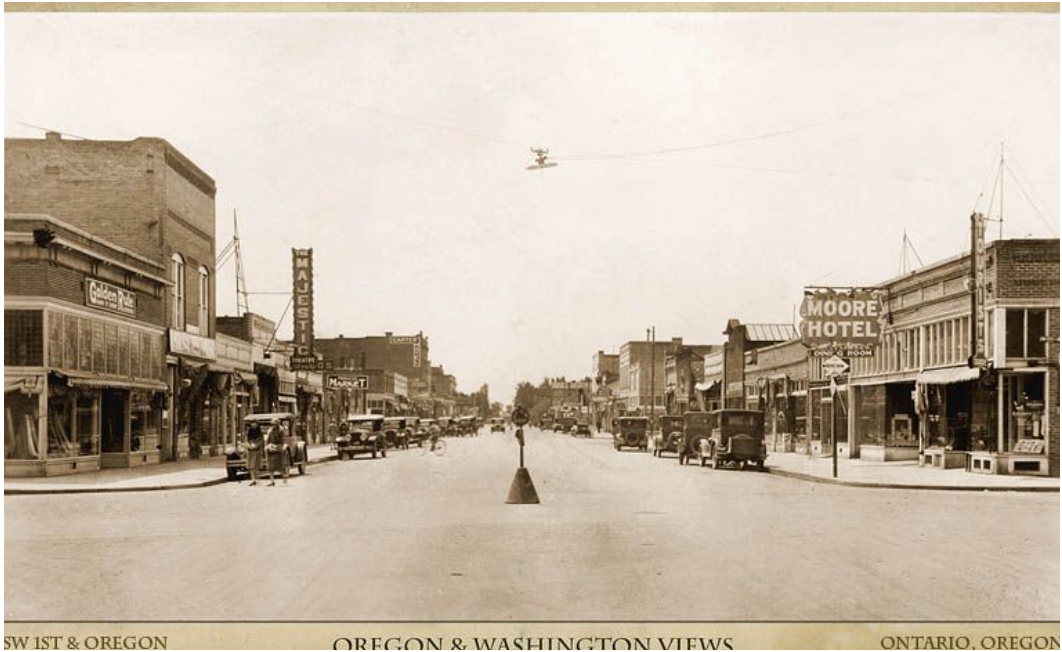
By the time the theatre opened, the population of Ontario was a mere 2,039, which made competition between the two motion picture and entertainment establishments fierce. While the Dreamland Theatre had been the main attraction for nearly a decade, by 1921, just a year after the Majestic's opening, it was already dominating pages with large advertisements in The Ontario Argus. L.C. Mears, the manager at the time of the theatre's opening, was a strong believer that theater success was in large part due to extensive advertising as he had found many successes doing such that with the other 16 theatres in eastern Oregon that he managed at the time. His philosophy was the put the theater's name in as many places and sizes in the local papers as possible in order to fill seats on a nightly basis (3-6).
During the 1920s, silent films had developed into full motion picture productions, and the Majestic took full advantage of that by showing longer films in conjunction with vaudeville acts from the circuit in Idaho. The first film that was ever exhibited at the theater was a Mary Pickford film titled Pollyanna (1920). During the second week of the theater's time in operation, the programmers had already diversified their exhibition into a portfolio of vaudeville acts and longer multi-reel productions, smaller reel comedies and longer thrillers, and they even had a night of short comedy, feature production and a "scenic" (documentary short) (7-8).
The venue was well equipped with the latest lighting fixtures and effects, fancy carpeting, a 500-light sign out front, an air cooling system, running water in the restrooms furnished for women and an automatic ticketing machine at the box office (much like what is still used today). The theater prided itself on its two machines that created "a hundred percent more brilliancy" to its luminosity. According to Exhibitors' Herald and Moving Picture World, the establishment used a Kolstadphone sound system (9).
The theater became an integral part of the small eastern Oregon and western Idaho community relatively quickly. In 1922, the manager at the time H.B. Paul organized an event for the College of Idaho Glee Club to perform at the theater. This was exciting news for the townspeople of Ontario, who had undoubtedly read about the musical coalition and their successes performing across the state of Idaho. The programming of the theater offered its patrons more than just the large studio productions of the time period such as local productions that residents of the area found comfort in its familiarity (10-11).
While the theater only lasted at the Majestic for twelve years, it was a critical establishment for historians searching for a glimpse of the past and how the people of a small town in the northwest of the United States enjoyed their days 100 years ago. It found success by being located in an industrial area of town for blue-collar workers to come to enjoy entertainment according to Sanborn Maps (12).

